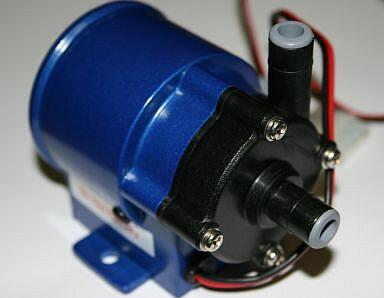DIY Water Cooling 101
Pump
When selecting a pump, there are several factors to keep in mind. For the sake of simplicity, we're only going to discuss in line pumps, as opposed to submersible pumps which must be placed inside a large reservoir.
First, you need to decide if you want to run the pump off the computer's power supply (12V DC) or a standard wall outlet (110V AC). In terms of performance, there will be no difference between an AC pump and a DC pump. The advantage to using a 12V pump is that you never have to remember to turn the pump on, since it runs whenever the system is on. The downside is that these pumps tend to be quite a bit more expensive than their AC counterparts. With an AC pump, it is possible to wire an AC relay switch that can power the pump automatically with the system. Some users of AC pumps simply choose to keep the loop running at all times to avoid forgetting to turn it on.
The main attributes to pay attention to when comparing pumps are pressure head, noise level, reliability, and flow rate. Pressure head is usually measured in feet and is extremely important to take into consideration - a pump with a high flow rate but low pressure head will not be able to overcome the restrictions caused by a radiator and blocks. The noise generated by the pump varies between units, but it's rarely much louder than an exhaust fan. Just make sure to place some padding between the pump mount and the case (some pumps include a piece). This will help reduce vibrations transmitted to the case and avoid any rattling.
Here are some common pump solutions:
Get Tom's Hardware's best news and in-depth reviews, straight to your inbox.
-
bigdogk9 check out a company called (asetek) best water cooler systems i have ever seen or used.Reply
